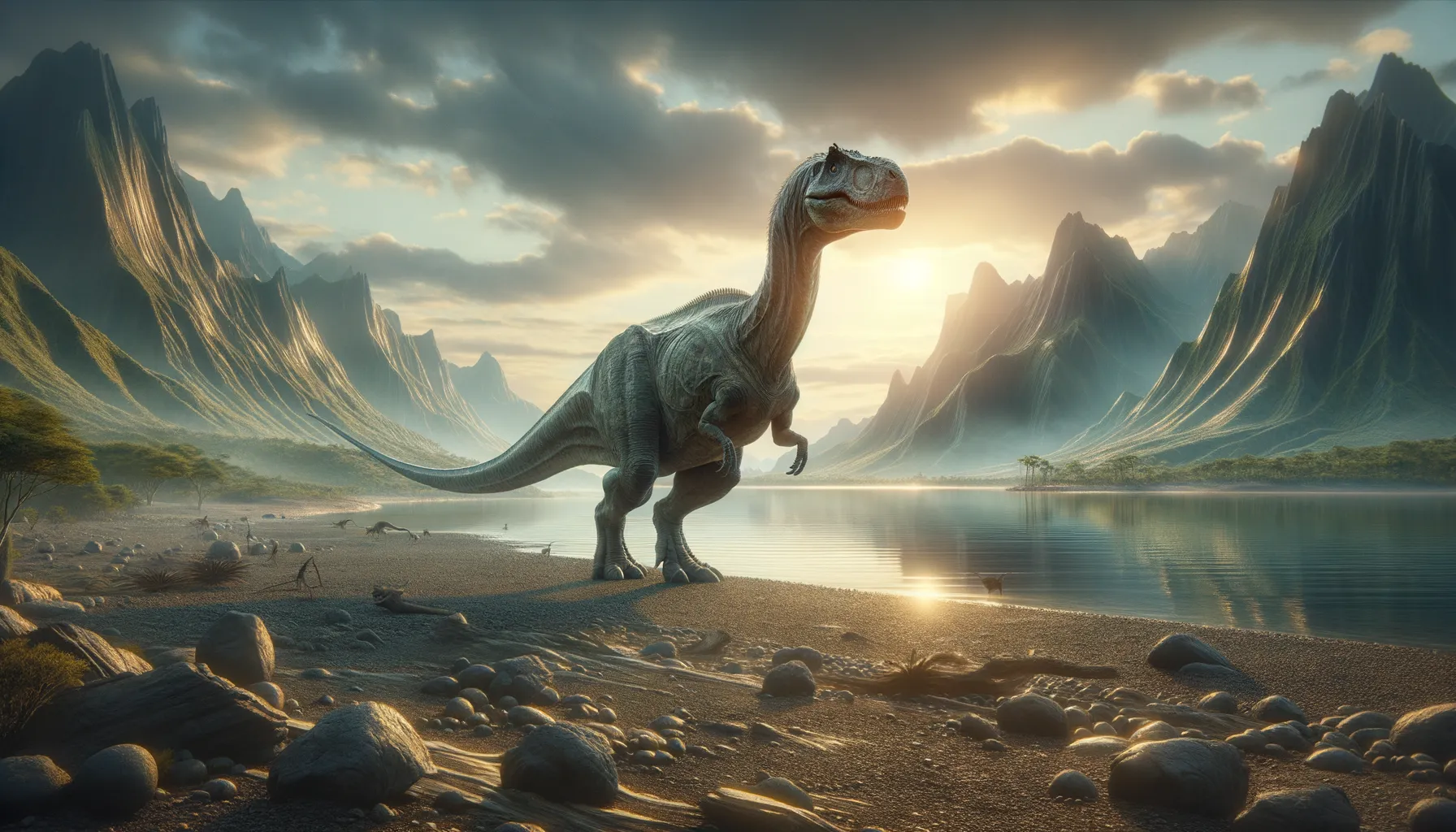
Liaoningotitan
A gentle giant of ancient China
Period
Cretaceous
Length
About 15 meters long
Height
Approximately 6 meters tall
Weight
Around 10 metric tons
Liaoningotitan was a massive sauropod dinosaur that roamed the Earth during the Cretaceous period. Known for its substantial size, this dinosaur was a gentle giant of the ancient world. Fossils were first uncovered in China's Liaoning Province, providing valuable insights into the life and environment of this prehistoric creature. Its discovery has helped paleontologists piece together the puzzle of dinosaur evolution in Asia.
Diet
Liaoningotitan was herbivorous, primarily feeding on plants. Its long neck allowed it to reach tall vegetation and browse across large areas without moving much.
Hunting
As a herbivore, it didn't hunt but foraged for food. It used its size and height to access food sources unavailable to smaller dinosaurs.
Environmental challenges
Adapting to changing climates and landscapes was crucial for its survival. To ensure a steady supply of food, it may have had to migrate with shifting vegetation patterns. Predators like large theropods posed a threat, although its size offered considerable protection.
Speed
Likely slow-moving due to its large size
Lifespan
Estimated to be several decades
First discovery
Discovered in Liaoning Province, China, in 2010
Fun Facts
- Liaoningotitan was discovered in Liaoning Province, China, a hotspot for dinosaur fossils.
- This dinosaur's name, Liaoningotitan, means 'Liaoning giant', reflecting its impressive size.
- It lived during the Early Cretaceous period, around 125 million years ago.
- Liaoningotitan was a herbivore, meaning it only ate plants.
- As a sauropod, Liaoningotitan had a long neck, which helped it reach leaves high up in trees.
- Despite its size, Liaoningotitan had a relatively light skeleton, which made it easier to move around.
- The fossils of Liaoningotitan have provided scientists with valuable insights into the evolution of long-necked dinosaurs.
Growth and Development
From birth, Liaoningotitan experienced rapid growth to reach its massive size. This growth phase was critical, as achieving size early increased survival odds. It likely underwent various developmental stages, culminating in its fully grown, armoured form.
Habitat
Liaoningotitan likely inhabited forests or open plains. Its environment would have had abundant food to support its massive appetite. Rivers or water sources played a crucial role for hydration and possibly nesting grounds.
Interaction with other species
Shared its ecosystem with a variety of other dinosaurs, both herbivorous and carnivorous. While competing for food with other large herbivores, its size would have afforded some advantage to claiming necessary resources.
Natural lifespan
Potentially lived for several decades if conditions were favorable.
Reproduction
Likely laid eggs, typical of dinosaurs, in secluded nests. Parental care might have been minimal, with young being precocial and independent soon after hatching.
Social behaviour
Could have lived in herds or loosely congregated groups for protection. Social interactions may have revolved around feeding or migrating in response to environmental pressures.
Fossil locations
Fossils have been primarily unearthed in Liaoning Province, China, an area renowned for its rich dinosaur discoveries. These locations offer vital clues to the prehistoric ecosystems that Liaoningotitan was a part of.
